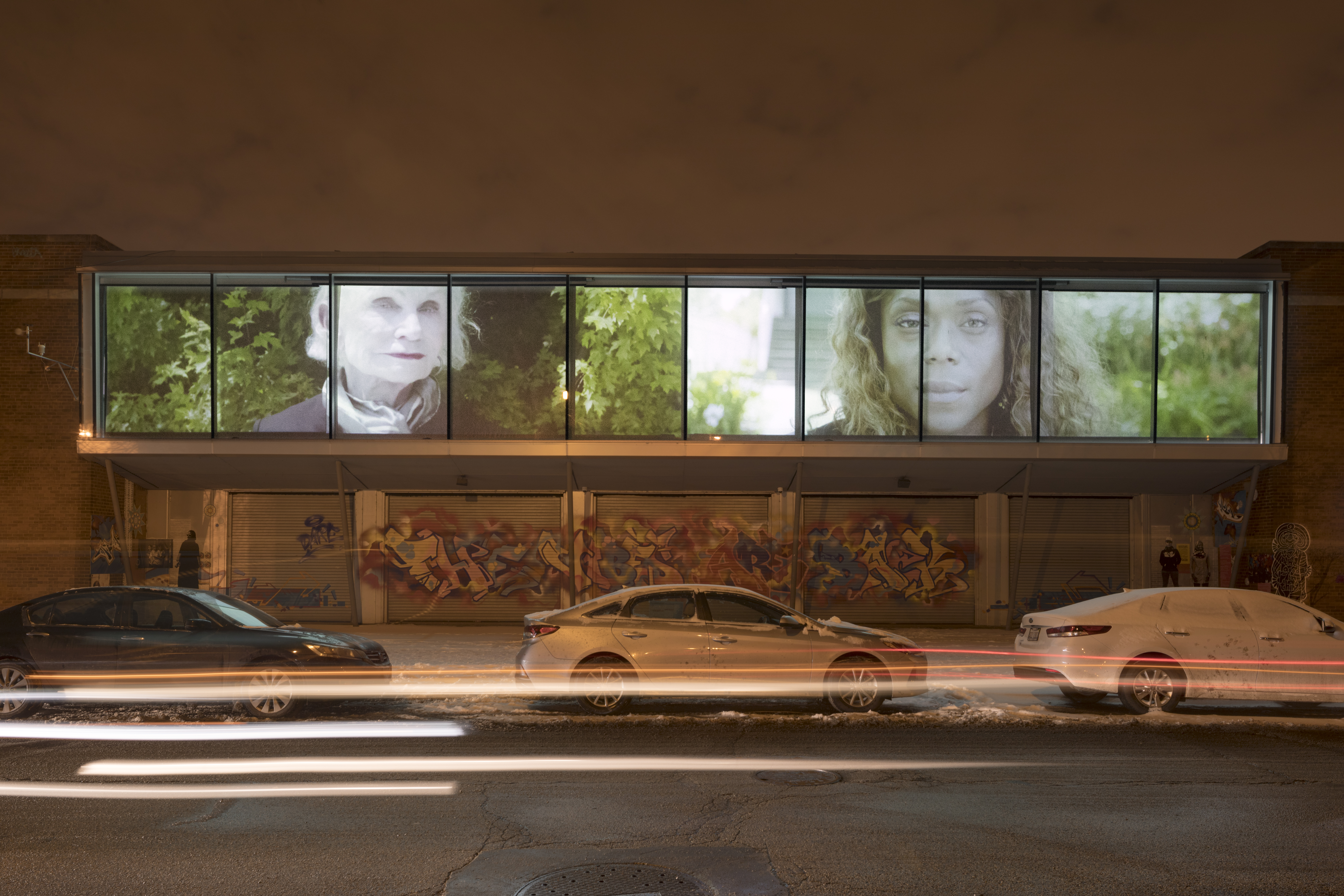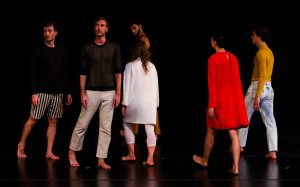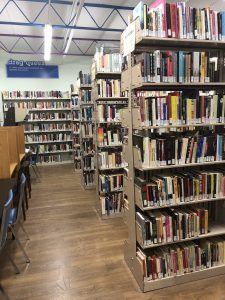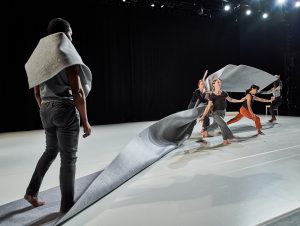Resilient Images confronts the viewer before one even walks through the gallery’s door. Look up slightly, and you will see Justine Pluvinage’s video installation Amazons facing out onto Cornell Avenue from the inside of the building, with its multiple panels of female subjects taking an epic, slow-motion stroll through both greenery and crumbling industrial architecture. If you’re walking with your head down through the bitter temperatures of a typical Chicago winter, you’re likely to miss this introduction entirely. For the artists, though, this might simply be indicative of the sort of resilience they are gesturing towards in their work.
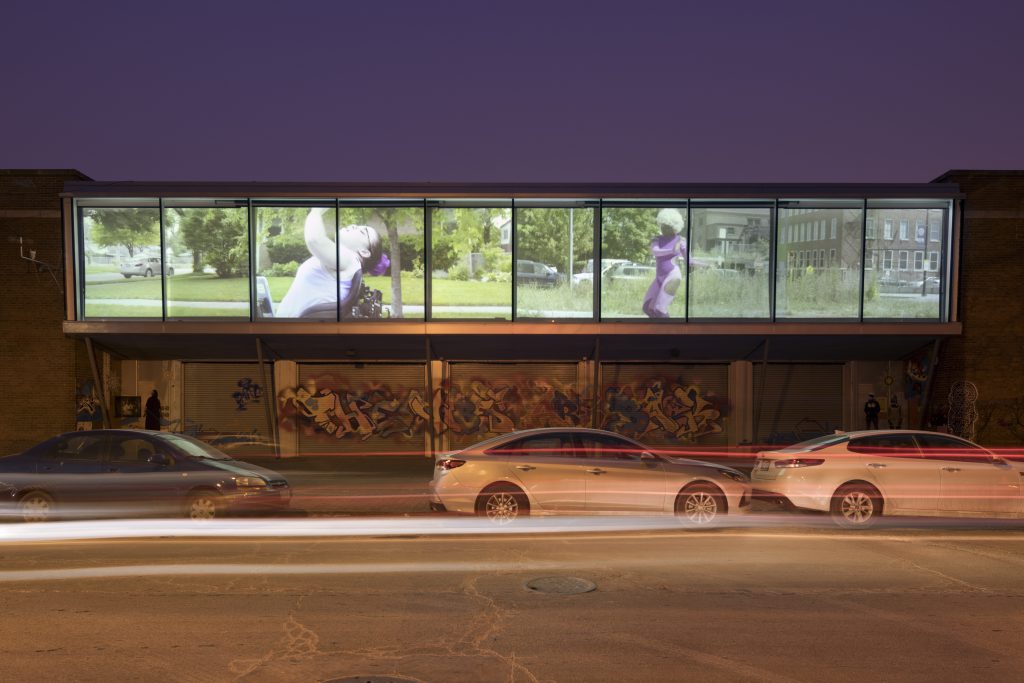
This exhibition is the result of a year-long artistic exchange between Hyde Park Art Center and the Centre Regionale de la Photographie Nord—Pas-de-Calais, featuring the artists Justine Pluvinage and David Schalliol. Both artists generated a site-specific work out of their respective residencies without further collaboration or dialogue with the other participant — Pluvinage travelled from France to Chicago to shoot her film, while Schalliol’s work was made in Hauts-de-France. Yet the pieces shown in Resilient Images are rich in shared references and inquiries. What is the fate of public space — not to mention land held in common, and other resources accessible to all — in the face of our present moment’s accelerating economic scarcity and ecological collapse? How is one’s occupation of a given space altered by the particular conditions of one’s embodiment? Resilience denotes an ability to return to one’s prior shape or conditions despite exterior pressures, but etymologically, it also hints at the value of recoiling and staying there. The products of this artistic exchange consider such various forms of resilience in tandem; together, they might suggest a different response yet.
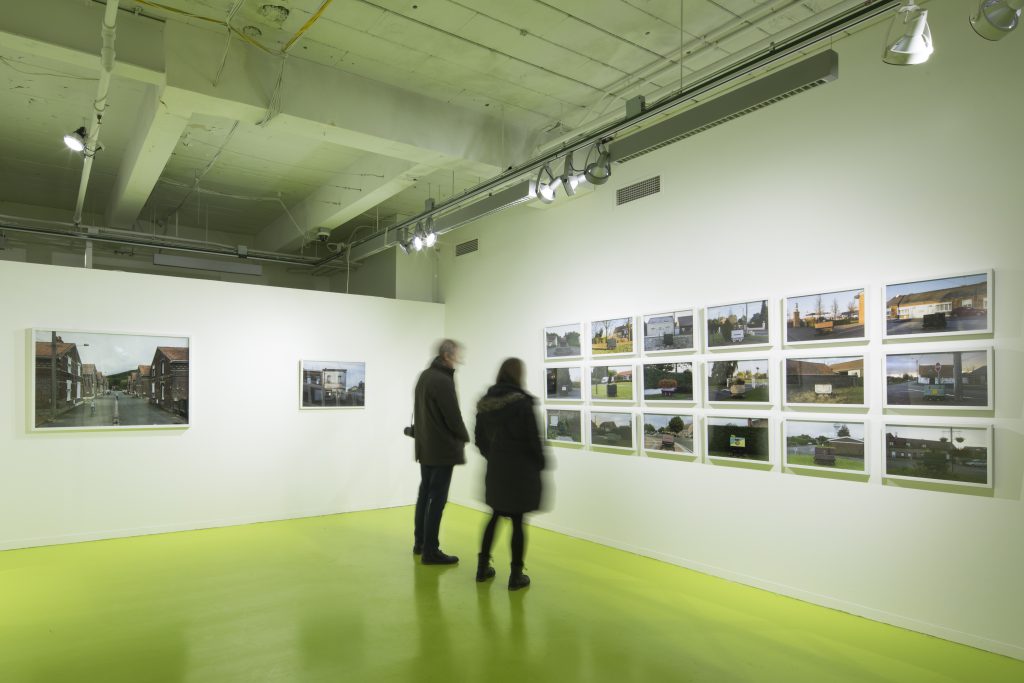
As a collection of photographs, Schalliol’s Mining Basin (Hauts-de-France) constantly re-negotiates such varying interpretations of what resilience might look like. Schalliol’s photography coexists alongside his work as a sociologist: the photographs veer between studies of his human subjects and the traces they leave on an already somewhat ravaged landscape. Mining Basin swirls with fog, grease, mountains of slag, smoke from the workers’ dirt bikes. A few trees grow uneasily from the mining waste, coal carts are displayed in residents’ front yards like lawn ornaments against the improbably stubborn plant life. One marvels at the painterly incongruity of each scene; the degree to which homes and livelihoods have been carved into an otherwise inhospitable landscape. Furthermore, most of the people featured in Mining Basin are men — male workers, or young boys. In a conversation I had with the artists, they were both compelled by the contrast between Schalliol’s documentation of this particularly-gendered space and Pluvinage’s work. There’s certainly tension here between the world of the village — sunny and bright, if sparsely populated — and the world of resource extraction, its clouds of pollution kicked up in such proximity. Yet as we are reminded in the exhibit’s accompanying text, the mining in question has mostly petered out. Thus the images are of resilience in its native sense: a landscape slowly re-occupied by wildlife; a stark domesticity seeping through the remnants of its excavation.
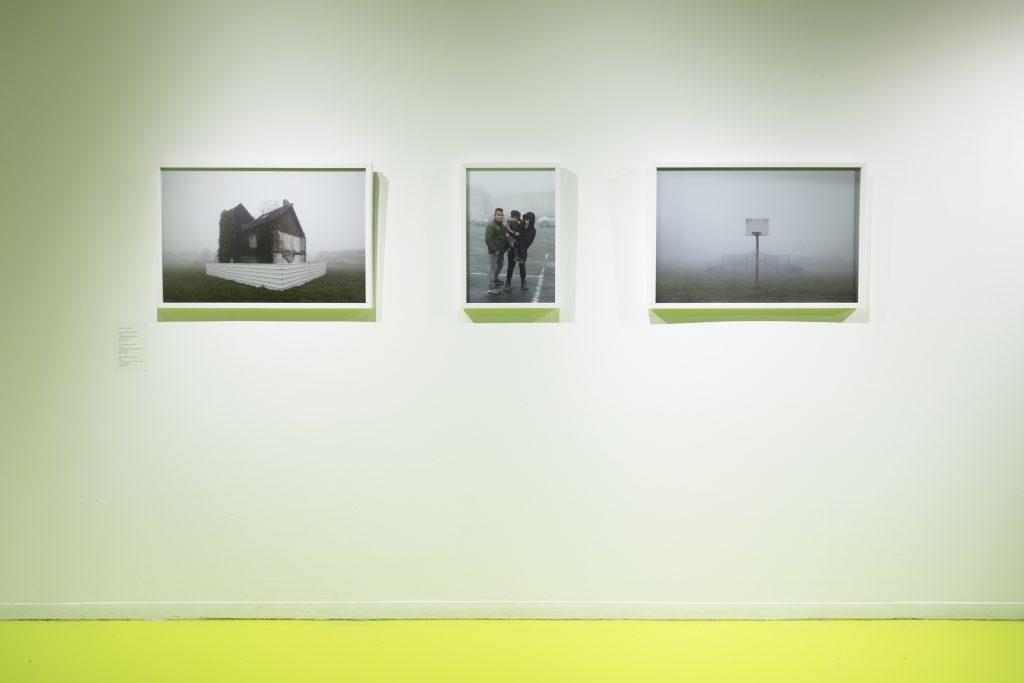
Pluvinage’s Amazons, on the other hand, is anything but stark. Projected onto the Jackman Goldwasser catwalk, it’s less spatially accesible than Mining Basin, its multiple perspectives resisting the viewer’s effort to focus on all moving parts at once. An array of women from Chicago, of varying ages, backgrounds and abilities, traverse the city. Among them are a dancer, a bodybuilder, a hip hop artist, a drag performer, and Pluvinage’s one-year-old child. Most of them walk; one woman uses a wheelchair. The film is insistently, mythologically, occupied by its subjects; their narratives often overlap and bleed together through the work’s multiple panels, though each performer remains distinct. In contrast to the quiet humidity of Mining Basin, the industrial landscapes traversed by these women seem ostensibly lush and vibrant: perhaps an effect of their presence, or of the pulsating electronic music score. For Pluvinage, Amazons is a millenial re-imagining of the “spaghetti western”, a touchstone that both nods to the conditions of cultural exchange under which Resilient Images took place and informs the film’s broader exploration of “free passage”. We might think here of relative endangerment in both Amazons and in Mining Basin — for Schalliol’s subjects, the threat is also an environmental one, hovering around the piles of hazardous materials and waste, while for Pluvinage’s film the notion of “free passage” seems bound up in navigating urban spaces as a site of potential harassment; certainly as a site of segregation. Interrogating the oppressive nature of public spaces through her chosen documentary medium, Amazons aims to place the obstacles each of its subjects might face in sharper relief against their persistent wanderings, and ultimately imagines that such spaces might be reclaimed as a form of empowerment.
Resilient Images is on view at the Hyde Park Art Center through April 22nd. A public talk between David Schalliol and architect Marshall Brown will take place on February 27th at 6pm.
Featured Image: A photograph of the Hyde Park Art Center at night, as seen from the east side of Cornell Avenue. Pluvinage’s 10-panel video installation is projected out onto the street. Half the screen shows the face of Deone Jackman, and the other half features La’Drissa Bonievel. Both women look directly at the viewer with neutral expressions; both backgrounds are a combination of spring foliage and industrial brick and concrete. Below the video facade is a swath of colorful graffiti, and the headlights of cars driving down Cornell Avenue leave photographic traces in the foreground. Photo courtesy of Hyde Park Art Center.
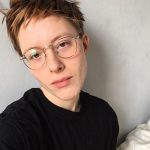 Maddie Kodat is an performance artist and writer based in Chicago, IL. They have performed at Comfort Station, Ballroom Projects, Fat City, Hamlin Park Theater, and Lou Conte Dance Studio, and published work with Glass Press of the Future and Meekling Press. Maddie received a BFA in Studio Art and a BA in Visual/Critical Studies from the School of the Art Institute of Chicago in 2017, prior to which they danced as a company member with Ballet Chicago for five years.
Maddie Kodat is an performance artist and writer based in Chicago, IL. They have performed at Comfort Station, Ballroom Projects, Fat City, Hamlin Park Theater, and Lou Conte Dance Studio, and published work with Glass Press of the Future and Meekling Press. Maddie received a BFA in Studio Art and a BA in Visual/Critical Studies from the School of the Art Institute of Chicago in 2017, prior to which they danced as a company member with Ballet Chicago for five years.
